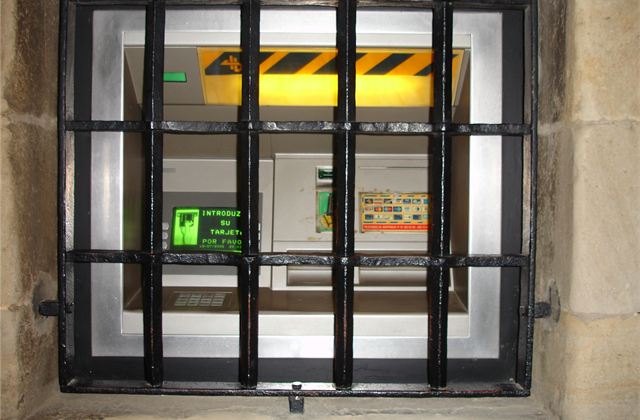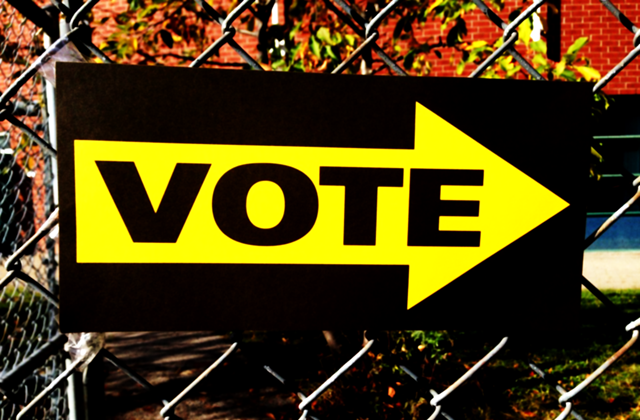Taxes, Bread, and Circuses
The Australian Government is now proposing a tax on bank deposits. Set to be introduced in the May 2015 budget.
Intentions, apparently honourable, are that such a tax would be used to ensure sufficient funds are available to be paid out to depositors in the event that the bank (or other Authorised Deposit-taking Institutions, ADIs, which includes banks, building societies, and credit unions) were to become insolvent. That is, the deposit tax (or levy, if preferred), would serve as a bail-out to depositors in the event of a bank collapse.
This is in contrast, but little different, to the current system of the Financial Claims Scheme (FCS) where deposits of up to A$250,000 per account-holder per ADI are protected for free. The Australian Government guaranteed deposits seal may be displayed if the institution is covered under the FCS.
That the current system is truly free, is ultimately a misconception. Someone, somewhere, would have to foot the bill for it. Under the current system, that would likely be the Government and commensurately the taxpayer in the end. To which the Government’s proposed deposit tax is seeking to shift this cost back to the banks and depositors. Because under the FCS they are not explicitly charged any fees for the Government’s guarantee.
Much of this is smoke and mirrors though when considering how many people have bank accounts relative to those whom pay taxes. And with respect to how much money is in the banking system.
The Government is proposing the deposit tax of 0.05 percent, aimed at raising A$500 million per year. Which would be used to fund payments to depositors in the event of a bank becoming insolvent.
If this is to be viable, that would require collecting the tax on A$1 trillion worth of deposits. Taking into account the M3 money supply aggregate figures from the Reserve Bank of Australia (RBA) (see Monetary Aggregates – D3), as at February 2015 there was approximately $A1.76 trillion of M3. While this may overstate somewhat the amount of deposits subject to the potential deposit tax, it does suggest the aimed A$500 million could be collected. At least as far as ballpark figures are concerned.
There are vested interests are at play however.
Banks are up in arms about the deposit tax. It’s another potential cost of doing business, which can impact on profits. A tax on deposits adds to the cost and ability for banks to raise funding via deposits. It’s also part of the very nature of moral hazard to privatise the profits and publicly share the losses. Along with notions of some banks being too big to fail. Which cuts both ways as far as Australia’s “Four Pillars” policy is applied.
It may well be yet another money grab by the Government. The tax may start low, but once introduced, it is likely there to stay and the taxation rate could creep upwards as required for Government revenue. Or worse, such a deposit tax may be a precursor to a Cypress-styled bail-in should a bank’s solvency come into question.
In 2013, Tony Abbott opposed Labor’s proposed deposit tax, yet in 2015 is now proposing a similar tax. So trust in Government promises is thinly veiled at best.
In 2014, Spain introduced a similar blanket tax of 0.03 percent on all bank accounts.
Regarding bail-ins, Canada wrote into its budget provisions for Canadian banks to perform bail-ins if in a state of emergency. Various G20 countries have similar bank bail-in legislation which has been created, or is in the process of being legislated, roughly since 2009.
A bail-in essentially converts some proportion of depositors’ funds into shares in the bank. This conversion of deposits from the bank’s liability into shareholder equity (the bank’s capital), potentially solves issues of liquidity and solvency. At least as far as the bank is concerned. Depositors may not see it that way. As their apparently safe deposits become shares which may subsequently fall in value as they’re subjected to market forces and the adjustment of share prices in a troubled business writing down bad assets.
Plus depositors do of course benefit from the banks being safe and solvent. They tend to free-ride on this, assuming it to be true. Being responsible for their money, generally ends once the money is deposited into an apparently safe bank as far as the average depositor is concerned. Or is even aware of for that matter.
That’s not to suggest that any form of deposit insurance (in the loosest sense) is free. It’s likely to be embodied in the price or costs somewhere. It’s just a matter of looking for it. Businesses know this, because it impacts upon their profits; and banks are businesses. As such, they are suggesting that should the proposed deposit tax come to fruition, this cost may be passed onto the depositors. Thereby reducing the rate of interest depositors receive on their bank accounts. Deposits as a source of funding for banks are typically cheaper than other sources. However, the full implicit costs (including the banking infrastructure and staff required to provide the services) need to be appropriately considered and not just the apparent stated rate of interest.
As Steven Munchenberg from the Australian Bankers’ Association (ABA) stated:
“It’s going to make it harder for banks to raise deposits which are an important way of funding banks. And therefore for us to fund the economy.
“And we also oppose it because particularly at this point in time with low interest rates a lot of people who are relying on their savings for their incomes are already seeing very low returns and this will actually mean they get even less money.”
Credits and Debits
The ironic thing about paying bank fees on deposits, is from an accounting perspective depositors funds are technically a liability for the banks. Yet banks often charge the depositor an account keeping fee for effectively lending their money to the banks. Granted, that is not to suggest that banks do not provide a service to depositors. There are elements of safety and portability related to depositors’ monies provided by the banks and their collective infrastructure.
Yet take away the safety and portability factors (including things such as ATMs, EFT, and debit cards), then in absence of inflation, would people really have a reason to keep their money in the banks?
By design, an employee is typically paid into their bank account. There is little avoiding banks in modern society. Reverting to an economic environment without a banking system, may have a place in theories of barter systems and communes, but for the rest of the world it would be impractical and infeasible. Untenable even. To the point where it would make sense for people to start creating banks. The services of a banks are most typically required.
While there can be, and is, quite the economic debate about endogenous money, here much of it is moot. For the simple fact that under fractional reserve banking and a credit-based money system, there is simply not enough physical money to return the deposits of depositors should they all decide to withdrawn their funds from the bank at the same time.
This is the nature of bank runs, and the deposit contract nature of banking, which is: first-come, first-served. The incentive is for the depositor to withdraw their funds as quickly as possible if they doubt the overall solvency of their bank. Because there is not enough physical money within the economy to account for the money that people hold within their banks. Whether taken at the institutional or aggregate level. What is rational for the individual to do, can also act as a kind of self-fulfilling prophecy wherein the collective actions of depositors withdrawing their deposits from a bank because of solvency concerns, leads to the bank actually becoming insolvent.
Furthermore, given the interconnected nature of the modern banking system, if one bank is insolvent, other banks may similarly be affected. Which can lead to contagion, as multiple bank runs occur, and banks collapse because of widespread panic. Potentially threatening not only the financial system but the overall economy as well.
Taxing Depositors’ Complacency
As a flat rate, the proportionate impact of any fee is going to be greater the smaller the deposited amount is.
For example, a $1 fee on $100 deposited is 1 percent, compared to a $1 fee on $10,000 deposited is only 0.01 percent. Suggesting at the margin, those with less money proportionately suffer more of the tax burden than do those with more money.
As the Australian Government is proposing, using a percentage amount based on the deposit balance for the fee can mitigate this. Yet even this not ideal, because the rate of taxation is not flat. Those earning more money face a higher rate of income taxation under the tiered rates for personal taxation in Australia. Although this may appeal to some, citing that those earning more money can better afford to pay more in tax, the impact on deposits can be quite significant. As will be demonstrated shortly.
Suffice to say, that any form of tax on deposits is regressive and misguided.
Other forms of income or wealth accumulation enjoy privileges that savings and their income received simply do not. In Australia, share dividends enjoy franking credits; buying property can defer capital gains taxes almost indefinitely, in conjunction with negative gearing.
Yet to save money, it first must be earned, taxed, then what is left can be saved.
Which typically means putting it in the bank. There it should be earning interest, but it may not be; and is also subject to the bank fees, inflation, and paying tax on the interest earned.
Perversely, the tax is paid on the full amount of interest earned and often bank fees cannot be treated as an expense.
Furthermore inflation is typically eroding away the value of the saved money on the whole amount saved. The interest is required just to keep pace with inflation; unlike in other asset classes such as shares and property where things may keep pace with inflation plus an additional return (earning a so-called “risk premium”).
This is all part of what is loosely, if somewhat apocryphally, referred to in finance as the “Law of Zero Return”. That is, after accounting for transaction costs, taxes, and inflation, money is lucky to earn a real after-tax return of zero. Nothing at all, but hopefully maintaining its purchasing power as a store of value. (Though if one is at least staying in the same spot, this can place them ahead of others who are going backwards.)
Note in the following example, which although using hypothetical figures, does not change the basis of the argument. Or its conclusion. Using real rates for things such as inflation and tax as required for individual circumstance will slide the ending values around, but the ultimate result logically holds regardless of whether actual or hypothetical values are used.
Suppose $100 is saved. This occurs after earning the money and paying income tax.
Assume inflation is running at 3 percent per annum. Meaning that in one year’s time, $103 will be required just to purchase the same amount of goods as $100 can purchase today.
If the interest rate paid on the bank deposit is 3 percent, then at the end of the year, with $103 in the bank account it’s tempting to think the saver has broken even in real terms. With their money still capable of purchasing the same amount of goods.
There are other things though, because the $3 interest is income.
Suppose the saver pays income tax at the rate of 30 percent, so their actual after-tax amount received in interest is therefore now $2.10.
Plus there’s probably a bank account keeping fee. Say it is $1 for the year.
Therefore the net money received on the saved $100 is now only $1.10 for the year. Which because that’s less than the $103 required for the $100 to simply keep pace with inflation, the saver and what their money can purchase is going backwards.
Throw in another proposed tax on bank deposits, is it any wonder depositors are starting to get more than a little annoyed?
Unintended Consequences
The thing about it is, the proposed bank deposit tax may have the unintended consequence of making things worse. In theory, the bank deposit tax, would be used as a kind of insurance (again using that term colloquially and not technically here) to pay for protecting bank depositors in the event of bank failure.
However, as noted, many savers are probably going backwards in real terms with what their money can purchase.
If savers’ collective sense of risk-aversion and desire for liquidity were to shift, such that figuring it’s no longer worth keeping their money in the bank, they collectively moved it elsewhere, their actions could well be enough to cause financial instability. The very thing that the proposed bank deposit tax is trying to prevent.
Whether this be in the form of: deposit drains and bank runs; contractions in the supply of credit and the ensuing slowing of economic growth; buying other assets at potentially inflated prices and maybe even using leverage to do so; or any of the many other ways it could manifest.
Yielding to a New Low
With interest rates in many countries around the world at, or near, historic lows, savers generally are not being done any favours. Australia is little different in this regard either. Looking at the market implied path of the cash rate and interest rates into the near future, at the time of writing favours lower interest rates (at least at the short end of the yield curve).
Furthermore, at present in parts of the world, such as Europe, there exists negative bond yields. That is, investors are effectively paying to lend their money to others. Part of this relates to becoming more risk-averse, and concerned with the return of investment as opposed to the return on investment. Perhaps trusting the bond issuers more than the banks when it comes to repayment of principal and interest.
As should be clear, this could also explain the behaviour of savers “hoarding” their cash in banks, even in the face of terrible returns.
The precarious thing about this is though, if deflation were to occur, something central banks are collectively trying very hard to prevent, then today’s money is worth more than tomorrow’s money.
Essentially the opposite to that experienced in an inflationary environment.
In a deflationary environment, the solvency of banks often comes into question. If the bank is not considered safe and there’s no positive rate of inflation eroding the purchasing power of the savers’ monies, then what reason do savers have for keeping their money in the banks? Especially when also factoring in bank fees and additional deposit taxes?
Taking the money out of the bank and stuffing it under the mattress may not be the best idea; but collectively fiscal and monetary policy is increasingly not only not helping savers, it is also directly penalising them.
What Risk?
If there are concerns about overall systemic risks and financial stability, including the solvency of the banks, then taxing the depositors seems rather misguided. A bit like sending the lamb to the slaughter, purely because it seems like an easier target relative to the wolves.
The big money in banking is made via lending out money. Making loans. Which is effectively creating credit; subject to regulatory frameworks (such as those implemented by the Australian Prudential Regulation Authority, APRA, and under Basel III, for example). Which aim to curtail some of the potential excesses of lending practices (including concentration risks) and theoretically create an overall safer banking and financial system from a macro-prudential perspective.
Therefore, although a bank run can cause a bank to become insolvent, it is but one of many potential causes. Many of which are likely to relate to the business, including lending and trading, practices of the bank itself. Because things are leveraged, they cut both ways. Giving larger profits if things go right, and also, larger losses if things go wrong.
A bank run is unlikely if the bank is being run properly. Conversely if the bank is being poorly run, a bank run may simply be yet another nail in the coffin because so many other nails are already in place. Where the accumulation of many of these nails has often occurred in the good economic times of expanding credit.
Chipping away at the economic bedrock that is the savers and taxing further their deposits, may prove destabilising as a major foundation of the economy, and what its growth is built upon, begins to shift.
Policy Thought Bubbles
The bank deposit tax, as far as the Australian Government is concerned, is preferable to something such as imposing more stringent regulatory requirements on banks and having them increase their capital holdings as buffers against asset write-downs and to protect against bank collapse. Which may be rather myopic, especially given the current economic environment, including present monetary policy. Making it all the more a case of leaning into the wind, instead of against it, to maintain positive economic figures in the short-term.
Papering over the cracks is not solving structural issues.
Surely a bit more thought could go into a policy aimed at making the banking and financial system safer. Rather than taxing depositors, effectively killing the goose that lays the golden eggs, why not instead take to task taxing the risky lending practices of the banks?
Whether this cost is ultimately born by the banks or higher risk borrowers is open to negotiation between the respective parties. Simply follow the money and which party wants it the most.
Regardless, an approach such as this is proactively targeting the extension of bad credit which tends to occur towards the top of the credit cycle. Where credit quantity increases but credit quality decreases. As opposed to targeting depositors whose credit quality is essentially constant. (Though from the banks’ perspective, liquidity quality varies across depositors subject to the inflows and outflows of monies.)
Or hold the bank employees making the loans, and (dare it be suggested) even the public servants acting as regulators, more accountable for their actions in the lending of money. Part of the payment structure could be held in escrow and locked away for the medium-term (earning interest of course; maybe at depositors’ rates), and subject to clawback should something go wrong.
If nothing goes wrong over the period, then at the end pay the monies to the employees as part of their remuneration.
If something did go wrong, then the funds clawed back could be used in lieu of a deposit tax.
That the funds were already in place and held for the medium-term in something such as the Financial Stability Fund could help with liquidity and solvency issues. In addition, the medium-term, as a period of time measured in several years, could also help to discourage the short-term nature of chasing quarterly profit targets only to cut and run with the money if things look like they are about to go wrong.
Now With Interest
It is admittedly unlikely that there is a perfect solution to all of this.
Banks do hold a precariously privileged position within the broad economy.
Vested interests do apply. Probably to all concerned.
Keeping lending and credit flowing looks good for both official measures of economic growth and banking profits. Until things go wrong that is.
With savers’ returns on deposits already cut to the bone via central bank actions, need they be further penalised by another tax from the Government?
Complacent and risk-averse though depositors tend to be, poking them ever more with sticks and giving carrots to those who pose far more danger to both themselves and others in the economy seems like a huge failure of policy. Both presently speaking and into potential future policies. Apart from it being unwise overall, it also appears as form of moral hazard itself.
Got any opinions on this? Then speak up. Use the comment section. Answer the related uthinki question by pressing the button below. For a moral hazard to occur, it may only require the majority remaining silent.
Feature Image Credit: Handige Harrie
 uthinki Considered Opinion?
uthinki Considered Opinion?



